
Shortly before the Buddha’s parinirvana, Ananda asked him by what method the faithful could continue to show reverence after his passing. Through pilgrimage, was the Buddha’s response, to four holy sites: Lumbini, where he was born (in modern-day Nepal); Bodh Gaya, where he attained supreme Enlightenment; Sarnath,where he set in motion the Wheel of Dharma; and Kushinagar, where he would pass into final release. By showing reverence in this way, disciples in the fourfold sangha—nuns and monks, laywomen and laymen—would deepen and energize their Dharma practice.
Over the centuries, Buddhists of all schools have heeded these words. Today the governments of India and Nepal actively promote Buddhist tourism in these primary sites, and have expanded their efforts to add more. Organized tours typically include Vaishali, where the Buddha’s adoptive mother Mahaprajapati and 500 women received permission to ordain, becoming the first monastic Buddhist women; Rajgriha, where the Buddha meditated in nearby caves, particularly at Vulture Peak where, according to the Mahayana tradition, he taught the incomparable Heart Sutra; Nalanda University, archaeological remains that recall the early seat of Buddhist philosophy and one of the ancient world’s greatest centers of learning; Sravasti, where the Buddha spent numerous rainy season retreats and gave many teachings; and Kapilavastu (today Tilaurakot) in Nepal, not far from Lumbini, the Buddha’s childhood home where he grew up in privilege as Prince Siddhartha until his Great Departure at age 29, more than 2,500 years ago.
With great fortune, the inner and outer journey that is pilgrimage has taken me to these holy places many times, both on foot (by tour bus, tuk-tuk, and plane) in the company of others, and—equally evocative—within the solitary expanse of my own imagination through years of researching ancient stories of the Buddha and his pastoral wanderings from the earliest literature. A particular joy has arisen from my extended literary pilgrimage: the discovery of many more sacred sites (already known to scholars and ardent practitioners, of course), sites whose stories further illuminate details not just in the Buddha’s life, but in the lives of the people who were close to him, especially the women. Many of these sites were confirmed by early Buddhist pilgrims, yet today many have been forgotten and lost to time.
What cause for surprise and delight then, when on a recent trip to Lumbini, I learned from local residents that numerous “new” Buddhist sites in southern Nepal are not only remembered but are in the process of government restoration—some as proposed UNESCO World Heritage sites. To my welcoming ears, many details of these ancient locations meshed seamlessly with familiar Sanskrit and Pali records. After all, this is the Buddha’s ancestral homeland on both his matrilineal (Koliyan) and patrilineal (Sakyan) sides; a region then as now dotted with small villages and rice-fields, rimmed by the stunning, distant backdrop of the snowcapped Himalayas. Here we find stories of young Prince Siddhartha, of his family and married life, with added stories of the Buddha’s return home on several occasions post enlightenment to promulgate the Dharma to his kinfolk. While the focus of his presence and activities usually falls to India, taken together the Buddha spent more than a third of his 80-year lifespan in present-day Nepal. More than two millennia later, it is fantastic news indeed that forgotten stories and sacred sites here are re-emerging and finally receiving their due.

And so, tapped by the thrall of pilgrimage once again, I hired a local driver and guide and set out to see these new archaeological sites firsthand (or was it all over again? In my mind’s eye I was already visualizing these places from my research). Short on time and with little idea of what to expect, my tour turned into a remarkable two-day whirlwind that delivered more surprises and blessings than I could have imagined. My biggest takeaway? Indeed, beyond Lumbini and Kapilavastu, Nepal is home to numerous extraordinary sacred sites waiting to be added to the Buddhist pilgrim’s journey. What follows is an initial reporting (proper pilgrimage scheduled for a later date), sprinkled with a handful of stories that make these unique places come alive.*
About 50 kilometers northeast of Lumbini, we arrived in Devadaha, the ancestral seat of the Koliyan kingdom and home to the Buddha’s two mothers: the sisters Maya and Mahaprajapati. As their father was regent, they were considered quite marriageable, and both became wives of the young Sakyan prince (later king) Suddhodana, the Buddha’s father. When Maya died shortly after childbirth, Mahaprajapati became the Buddha’s adoptive mother, the only mother he ever knew. Today Devadaha is a poor but colorful village with a bustling market and lovely gardens. Nearby, sequestered within government fencing, an archaeological site (called Bhawanipur) marks the homestead of the Buddha’s matrilineal forebears where his mothers would have grown up. Hushed silence greets the visitor entering the gate, then brick paths and deep shade from the trees. At the far side of this park-like enclosure lies a tiny temple dedicated to Maya, still actively visited by local Hindu worshippers, as inside and out it is ringed with images of the goddess on terracotta tablets, heavily rubbed with puja paste. The ancientness of this gentle place whispers from the trees, echoes from the old well.
To the southeast of Devadaha lies Ramagrama, an imposing, grass-covered stupa, well-tended by the Nepali government, that is said to contain bone relics of the Buddha. This claim is supported by early records which tell us that Koliya was one of eight kingdoms the Buddha chose at the time of his parinirvana to receive an equal portion of his physical remains. However, Ramagrama is unique because, unlike the other seven reliquary sites located in India, it has never been disturbed. (Legend tells us that King Ashoka attempted to open the stupa in the third century BCE with the intention of re-distributing the contents, but was driven back by a fiery dragon king (naga) and ended up worshipping at the site instead.) It is interesting to reflect that it would be in the homeland of his mothers that the Buddha’s physical remains would be fiercely protected. A proposed World Heritage site, Ramagrama is an exceptionally sanctified holy place.
Mentioned in many early narratives, the Rohini River marks the historical divide between the Koliyan and Sakyan kingdoms. Today the river remains robust, although vast flood plains on both sides testify to an earlier majesty. The story that follows provides context for conditions that that gave rise to Mahaprajapati and the 500 women’s quest for ordination: normally peaceful neighbors, tensions mounted between the Koliyans and Sakyans during a severe drought when both sides lacked sufficient water for their crops and each secretly siphoned off river water during the night. Despite protestations from the women, war broke out with hordes of armed men mustering on opposite sides of the river. The Buddha, perceiving the dispute from a great distance, miraculously appeared in the sky over the river to give his kinsmen teachings, pointing out the foolishness of conflict and the value of human life over water. So ashamed were the men that they threw down their weapons and declared themselves his disciples, taking monastic ordination on the spot. Soon after, the women, already devout lay practitioners but now “widows” bereft of husbands, sons, and the protections of patriarchy, also requested ordination, led by Mahaprajapati, also a widow since Suddhodana had recently died.

Turning to the Sakyan side of the river, a site of extraordinary importance in canonical accounts, is the Nigrodha (Banyan Tree) Grove, today a vast grassland managed by goats and marked by brick ruins, several large stupas, and an ancient well. Located about seven kilometers from Kapilavastu, King Suddhodana originally established the area as an encampment in preparation for his son’s return home after a 12-year absence.** Besides housing hundreds of monks, it became the spot where Sakyan citizens gathered to attend the Buddha’s teachings. Of particular importance to women, it was here that Mahaprajapati, together with 500 women, beseeched her son to allow women to attend his teachings (not the Buddha, but the Sakyan patriarchy had prohibited this), to which the Buddha immediately acceded. Five years later, on the Buddha’s return, it was here that she and the women—now well established as lay practitioners—once again approached the Buddha to request monastic ordination. Equally important, it was in the Nigrodha Grove that Mahaprajapati offered her son the incomparable gift of a golden robe that she had woven herself, one that prophecies say is destined to become the investiture robe of the future buddha Maitreya. A huge stupa marks this latter event (also noted by fifth- and seventh-century Chinese pilgrims), and includes a large, painted, stone carving depicting the precious robe offering from mother to son.
Locally known as Sagrahawa, Sanskrit sources have named the nearby lake The Pool of Severed Hands. Today a peaceful marshland abounding with water birds, it marks the bloody massacre of the Sakyan people, which took place toward the end of the Buddha’s life. Stories are mixed, but we are told that the Kosalan King Virudhaka (son of Prasenajit) became enraged when he discovered that his mother had been a slave girl covertly given in marriage as a Sakyan princess to his father. Bloodlines meant everything then and, angered by the deception, he led his armies to slaughter the Sakyan men while taking the women as war booty and concubines. The proud women were defiant and refused all sexual advances, so Virudhaka ordered their hands and feet cut off and thrown into a nearby pond, which streamed with their blood. There the women lay dying when the Buddha, through clairvoyance and great love, perceived their suffering and miraculously arrived with disciples to minister to their wounds and give them teachings. While there was no stopping the karma of death, lore has it that the women continued to attend his teachings from heavenly realms and soon attained freedom from rebirth. Today this sacred site emanates a rarified serenity.
Next up is the Stupa to Kanthaka (the horse!). Animal lovers take note, about 50 meters directly opposite Kapilavastu’s Eastern Gate lies an unexcavated, grassy mound identified as the spot where Prince Siddhartha’s horse, Kanthaka, dropped dead from grief at his beloved master’s Great Departure. Recall that this was the steed that carried the prince away that fateful night, returning later with his groom Chandaka to report the news and return the prince’s royal vestments to the king. So heartbroken was Kanthaka that no amount of love and nurturing from the palace women could revive him. He is well remembered in the literature and, delightfully, still commemorated today.

A short walk beyond the Eastern Gate, one arrives at a small grassy meadow with low-lying Twin Stupas, said to be the tombs of the Buddha’s parents. It was astonishing to encounter these, as nowhere in my textual research did I ever see mention of their existence! According to records, Suddhodana would have died at least 60 years after Maya, but here they are side by side, quietly at rest.
As coda to this expedition and stepping back some eons further in time, two more locations, Gotihawa and Nilgirihawa, mark the birth (perhaps nirvana) sites of two previous buddhas, Krakucchanda and Kanakmuni (the 25th and 26th buddhas respectively),*** both identified by Ashokan pillars, now broken.
And so ended my brief tour, where I was both tourist snapping photos and pilgrim longing for more practice time at these extraordinary sites. What’s certain is that my heart brims with a deeper love for this sacred region of Nepal that is so much more than simply “the birthplace of the Buddha.” I feel blessed to have tasted Buddhism’s true motherland here, and rejoice that Nepal is tending to her re-emergence during this time of darkness on our planet.
In naming his short list of pilgrimage sites the Buddha said “. . . a pious person should visit and look upon [these places] with feelings of reverence. And they will come, Ananda!”
And surely they will come.
* These and more stories are told at length in my books Stars at Dawn: Forgotten Stories of Women in the Buddha’s Life and The Woman Who Raised the Buddha: The Extraordinary Life of Mahaprajapati.
** Sanskrit chronology is used here.
*** Shakyamuni Buddha of our era is said to be the 28th.
In November 2023 Wendy plans to co-lead a 10-day pilgrimage “Following in the Footsteps of Mahaprajapati and the 500 Women,” from Lumbini, Nepal to Vaishali, India. For information contact her at [email protected].
Related features from BDG
Why Education Matters: Improving Female Empowerment and Health Practices in Nepal
Building Bridges Between the United States and Nepal, the Story of a Divine Collaboration
One Year On: Restoring Quake-damaged Heritage Sites in Nepal
Namo Buddha Mountain: Walking in the Bodhisattva’s Path in Nepal




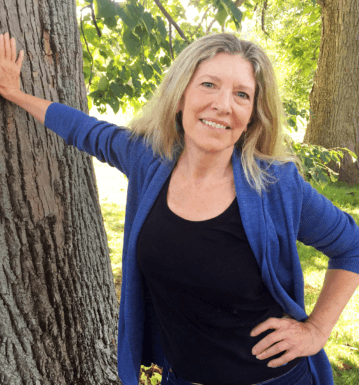

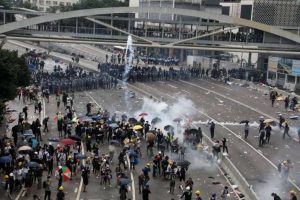

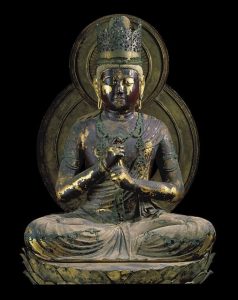



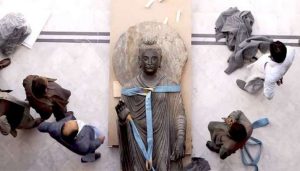

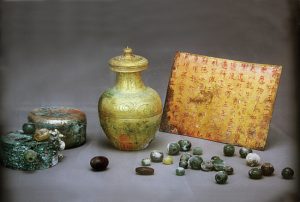
Thank you for sharing your profound journey to the sacred Buddhist pilgrimage sites in Nepal. Your recounting of the historical significance and spiritual resonance of places like Lumbini, Bodh Gaya, Sarnath, and Kushinagar, along with lesser-known sites like Devadaha and Ramagrama, paints a vivid picture of the deep connection between the Buddha’s life and these holy places. It’s heartening to hear about efforts to restore and preserve these sites, allowing pilgrims to continue their spiritual quest and deepen their understanding of the Dharma. Your personal reflections add depth and insight to this ancient tradition of pilgrimage, reminding us of the enduring power of faith and reverence in the journey towards enlightenment.